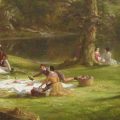Pickin’ or pizzacato, it’s all the same on National Violin Day
National Violin Day (Dec. 13) celebrates the impact and cultural contributions of one of music’s most versatile instruments. Whether you’re into country pickin’ on the fiddle* or Stravinsky compositions in the concert hall, there is a violin for you. We asked an expert to choose one of his favorites from our collections.
The music collections of the National Museum of American History contain almost 8,000 musical instruments of American and European heritage, as well as other objects ranging from Duke Ellington’s sheet music and square-dancing outfits to a cigar-box guitar and priceless 17th-century stringed instruments.
Among these rare instruments are several made by the great Antonio Stradivari himself:
- The Servais Cello (1701), considered one of the best-preserved Stradivarius cellos
- Herbert R. Axelrod Quartet of Decorated Instruments, rare decorated Stradivarius instruments: Violin, the Ole Bull (1687); Viola, the Axelrod (1695); and Violin, the Greffuhle (1709).
Ole Bull
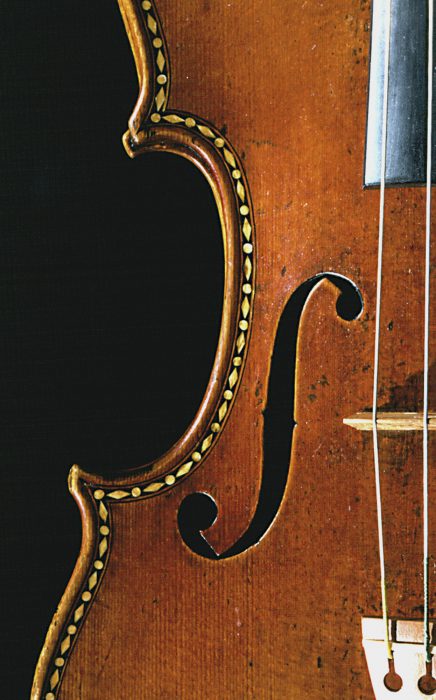
“Ole Bull” violin made by Antonio Stradiveri in 1687. (Courtesy National Museum of American History)
This violin was made by Antonio Stradivari in Cremona, Italy in 1687. The violin is named after its 19th century owner, Ole Bull (1810-1880), a celebrated violinist and seminal figure in Norwegian music. The violin is made of a one-piece table of spruce with even medium fine grain broadening toward the treble side, one-piece back of maple with a beautiful broad descending figure slanting from treble to bass side, ribs of similar maple, with a modern maple neck terminating in the original pegbox and scroll of similar maple, and a golden brown varnish.
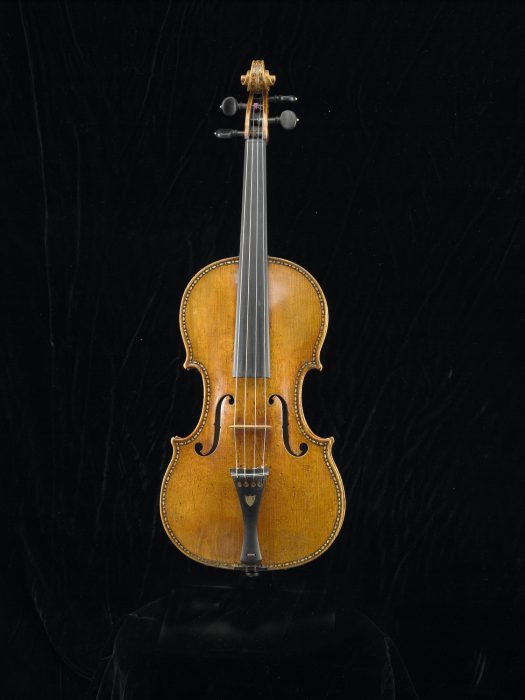
The “Ole Bull” violin made by Antonio Stradivari. Front view. (Courtesy National Museum of American History)
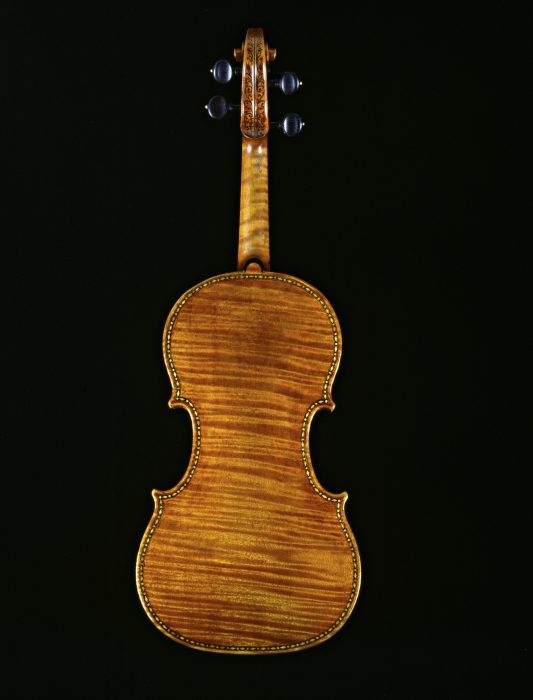
“Ole Bull” violin made by Antonio Stradivari, 1687. Back view. (courtesy National Museum of American History)
“Only eleven decorated instruments made by Antonio Stradivari (1644?-1737) survive,” says Kenneth Slowik, Artistic Director of the Smithsonian Chamber Music Society and Curator of Musical Instruments. “This one, built in 1687 and known as the Ole Bull because it was once owned by the 19th-century Norwegian violin virtuoso of that name, is exceptionally fine sounding,” he continues. “It is the most sought-after instrument in the Smithsonian’s fine collection among the many violinists who play with the Smithsonian Chamber Music Society.”
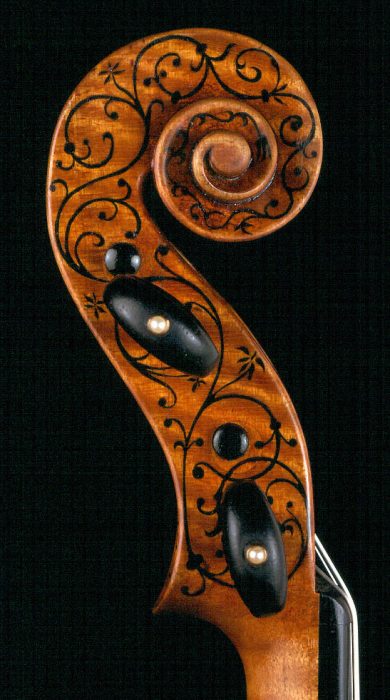
The “Ole Bull” made by Antonio Stradivari. Detail. (Courtesy National Museum of American History)
These instruments live on, not only behind glass in display cases, but also in the living music created by the Smithsonian Chamber Players. Ole Bull, can be heard, in the company of three of the Smithsonian’s other Strads on this recording of Robert Schumann’s Piano Quintet in E-flat Major, Op. 44; Piano Quartet in E-flat Major, Op. 47
The human impulse to make music will not be denied. Whether we create art to make music or we make an art of making do, we’re always making music.
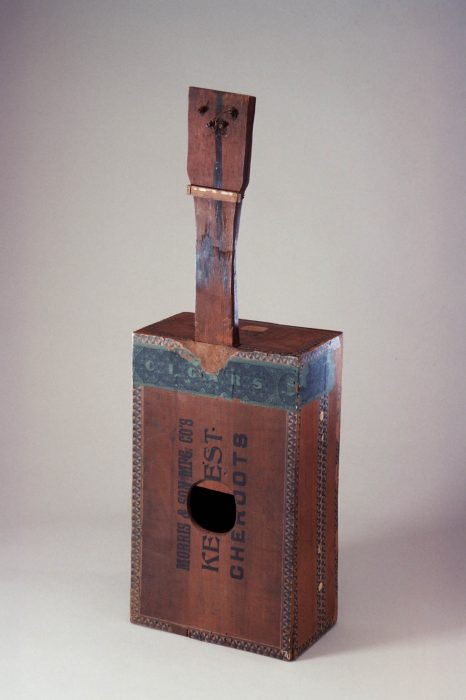
his cigar box guitar was made by an unknown maker in North Carolina around 1875-1899. It is a four course (4×1) guitar made from a Morris & Son cigar box. Homemade instruments such as cigar box guitars and fiddles played an important part in jug bands and blues music in the late 19th century through the Great Depression.
Posted: 13 December 2019


